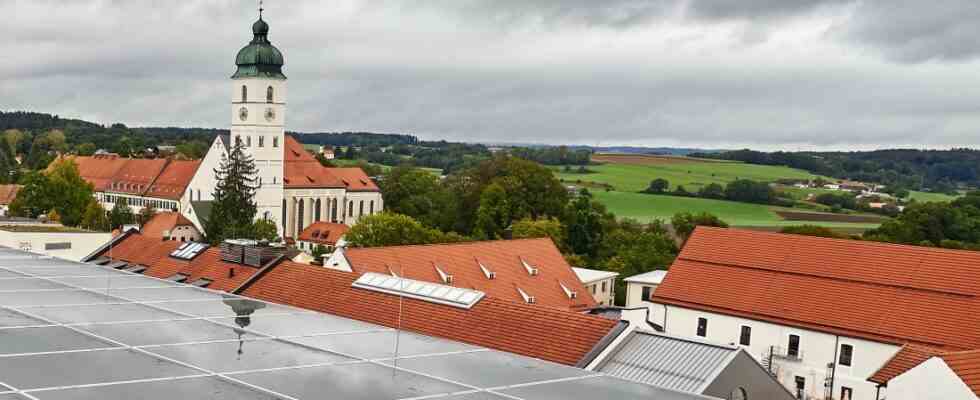2.5 million kilowatt hours. Additional photovoltaic systems (PV) could generate about as much electricity if the existing potential on the roof surfaces of the properties in the district of Ebersberg were exhausted. This corresponds to the electricity requirements of 620 households and annual CO₂ savings of 1012 tons, as Anna Neumeier from the Ebersberg-Munich Energy Agency said at the most recent meeting of the district environmental committee (ULV). She presented the committee members with the current potential analysis of PV systems on the roofs of buildings belonging to the district.
Such an analysis actually already exists, dating back to 2010. At that time, systems were proposed that corresponded to the optimum at the time from a technical and economic point of view. In the meantime, however, not only have the technical, economic and legal aspects changed significantly, but it is also a matter of fully exploiting the existing potential. This should increase the district’s contribution to climate protection in the best possible way – that’s the idea behind it. Likewise, more PV systems should lead to the district achieving its self-imposed goal of being free of fossil fuels by 2030.
The existing PV systems on roofs avoid 280 tons of CO₂ every year
There are already 14 PV systems on properties and other areas in the district. In 2020, they generated a total of 3.8 million kilowatt hours of electricity. The consumption of all properties in the district was around 2.1 million kilowatt hours. Accordingly, a surplus of 44 percent was achieved. The PV systems on the roofs alone generate 0.68 kilowatt hours of electricity annually – and thus avoid around 280 tons of CO₂ per year.
Three projects are currently being planned. The third PV system is to be completed this year on the roofs of the Ebersberg secondary school, next year at the Vaterstetten grammar school and in 2024 the Comenius school in Grafing is to follow – the energy agency calculates a total output of 190 kilowatts peak.
The energy agency sees particularly high potential for five properties
For the new concept, the energy agency has now examined all 16 district-owned properties and created a rough analysis for the properties. The energy agency therefore sees particularly high potential in the high schools in Grafing, Vaterstetten and Kirchseeon, at the secondary school in Vaterstetten and at the Comenius School in Grafing. A more detailed analysis was prepared for these five properties.
Anna Neumeier pointed out that so far there is no comprehensive assessment of the economic profitability of the five properties mentioned and all the others. There would be a lack of information, such as an on-site inspection or information about the condition of the metering technology in the buildings, for example. However, it can be assumed that it will be less than 15 years before the systems in the higher-priority projects will be profitable from an economic point of view. However, an exact cost estimate is not possible at this early stage of the potential analysis.
PV systems could also be installed on rewetted moorland
In addition to the roofs of the district’s own properties, there is also potential for PV systems on the drained moor areas in the district, as Neumeier also explained at the meeting. Because drained moors emit CO₂, while they store CO₂ in a renatured state. That is why the district is very keen to promote the rewetting of moors. According to Neumeier, the problem with this is that farmers who own the affected areas are concerned that such a project could have a negative impact on management options. The district would therefore like to create incentives for using the land as an alternative to agriculture, for example by setting up open-air PV systems there. The Energy Agency proposes developing an overall concept that contains an assessment of the extent to which former moorland areas are suitable for PV systems.
The Lower Nature Conservation Authority (UNB) is quite critical of the Energy Agency’s proposal. In a written statement, she refers to the difference between rewetting and renaturation: Because rewetting can prevent further CO₂ emissions, but a new CO₂ bond would only be possible through renaturation – i.e. if the corresponding mosses are also present again . According to the authority’s assessment, the potential for PV systems on roof surfaces and sealed surfaces should be sufficiently exploited.

